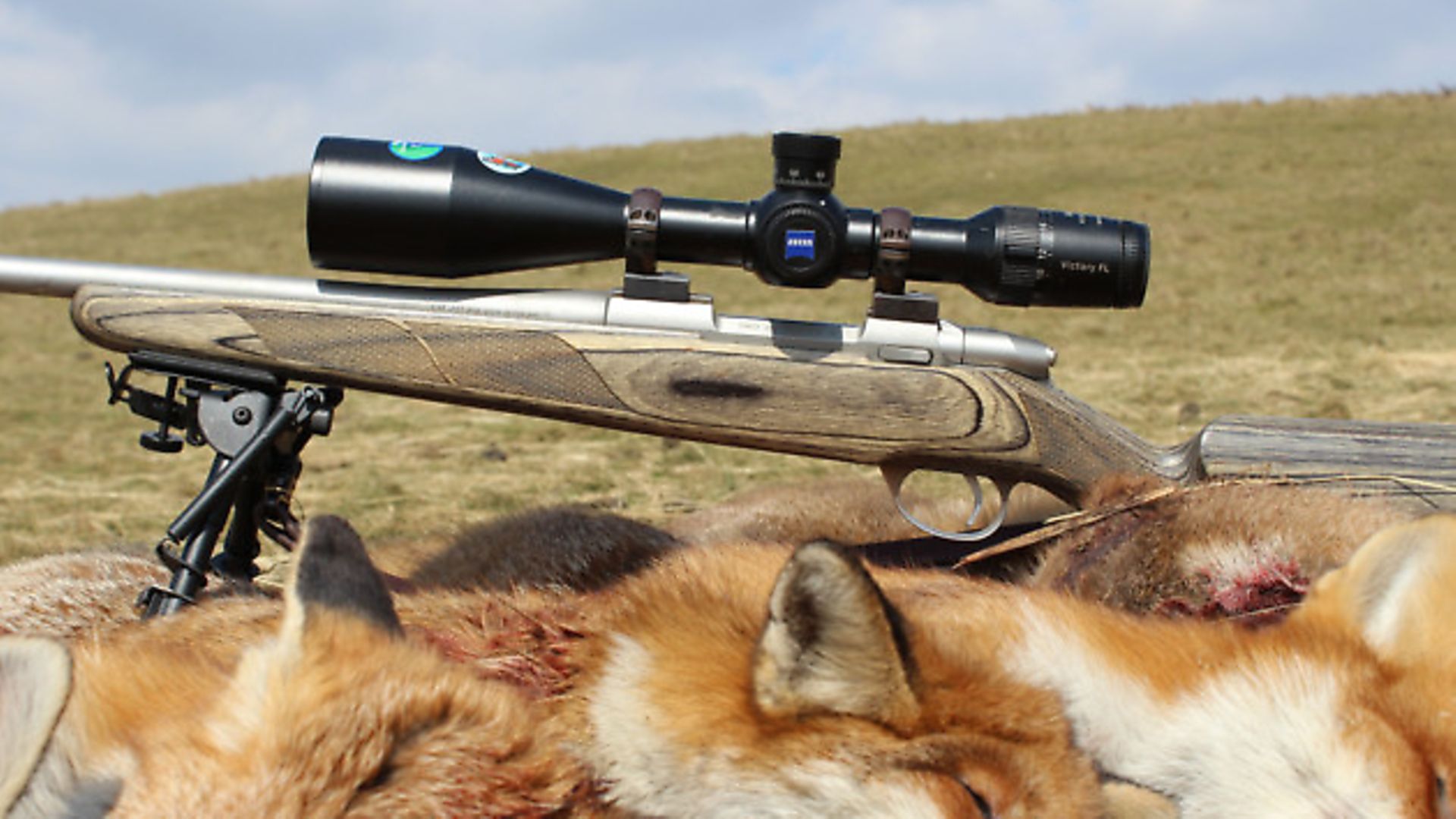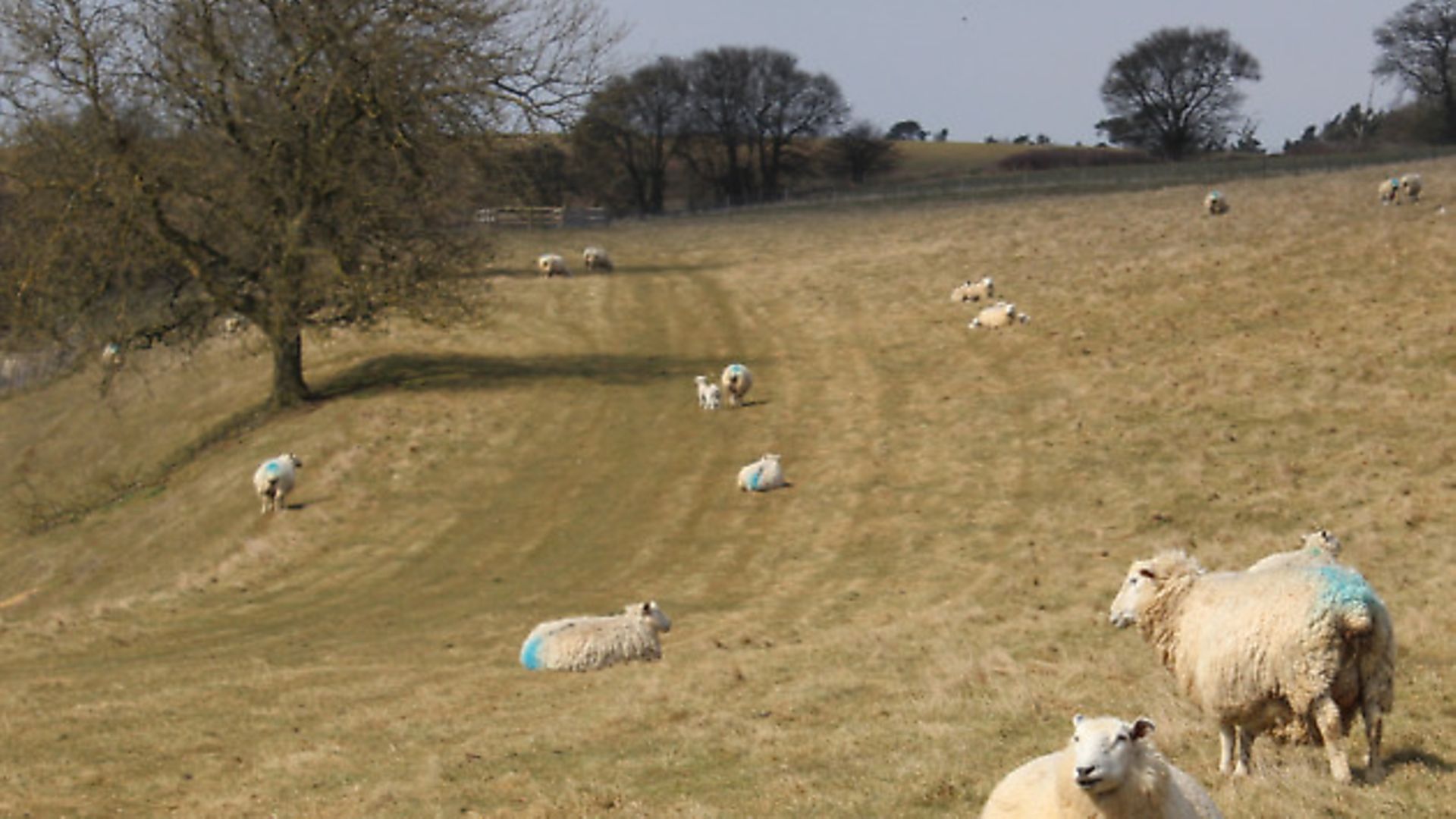Roy helps out a farmer with some foxes that are only attacking ewes with twins
 credit: Archant
credit: Archant
In a normal season my foxing forays tend to slow down a little at this time of year, as we will usually have accounted for the majority of the foxes on our ground. So around now we would only be shooting the odd one or two each week as they move in from other areas. It is amazing how quickly things change! One desperate phone call from a local farmer and foxing was once again in full swing.
 credit: Archant
credit: Archant
The farmer explained that he had just started lambing over the last few days and was expecting in excess of 1,000 lambs to be born over the coming weeks. Unfortunately he was already experiencing huge problems with losses due to foxes.
As his farm was only a few miles away we arranged that I would pop down and meet him that evening to see if we could help. I know the area reasonably well, as I occasionally go foxing with one of the keepers whose land borders the ground, and I did not expect that there could be that many foxes causing the problems.
Over a cup of tea and a choccy biscuit the scale of the problem soon became apparent. As the farm is mixed arable and livestock, the sheep fields are scattered over a large area, with lambs being taken from fields that are a good distance apart, pointing towards more than one culprit. The farmer went on to explain that he had separated his ewes that had twins from the ones that had single lambs. He then mentioned that the problems were all occurring in the fields that held twin lambs, as the foxes had obviously realised that the ewes were struggling to defend both infants, allowing them to dispatch one lamb and sometimes wound the other.
With the losses accounting for a relatively large percentage of newborn lambs each night, I decided we should get out and make a start as soon as possible: that very night.
With the wind blowing and the temperature still dipping below freezing, I thought we would clear the problem relatively quickly. Pulling through the gateway onto the first field of ewes we started to scan the side of the hill with the lamp. Within seconds two sets of unmistakable vulpine eyes shone back at us from a few hundred yards off, and within the next second they turned tail and ran. Surprised at the uncharitable welcome we received from our first customers, we continued to drive to the top of the hill so we could get a better look at who was about. Up at the top of the North Downs it immediately felt ten degrees colder, and with the wind whipping up I decided to have a quick call before heading down to the relative warmth of the fields far below the hill.
I was hoping that we might be able to entice the duo back for a curtain call as we were facing the point where they were last seen. After a minute or so of calling we illuminated the area once again to be greeted by our new acquaintances, but as soon as the lamp highlighted their position they were gone again.
In a huff I had a quick scan round to find another set of eyes glaring back from 60 yards behind us; luckily she was more obliging and allowed us a quick shot. This fox turned out to be a milky vixen. I later discovered that she had made her way out from a very foxy overgrown quarry directly behind us that I had not realised was there. This is one of the problems of not doing your homework properly in the daytime due to a hasty start.
Feeling a little happier that we had started to scratch the surface of the problem, we drove down the hill towards the next sheep fields. Unfortunately, each time we picked up a glimpse of eye shine it was quickly followed with the sight of the rear-end of a fast departing fox. At the end of a very long, very cold night we finally accounted for another fox as he tried to creep away through a rape crop in one of the adjoining fields.
I was feeling somewhat disappointed that we had only managed to account for two foxes from the half a dozen or so that we had spotted. I could not understand why this particular farm had so many lamp-shy foxes, especially taking into consideration that I knew no one had been targeting them for quite some time.
With the farmer calling eagerly the next morning to see how we got on, I explained that he was playing host to some very tricky Charlies. He then explained that they do have a few guys that lamp the rabbits on the farm with .22s and they occasionally shoot the odd fox. I suggested it appeared that they probably took a lot more shots at foxes than actually shot foxes.
I have no problem with using .22 rimfires on foxes, so long as you make sure it is close enough to give you the best chance of a clean kill. Too many people ‘have a go’, which is not only unfair on the animal but it also makes trying to catch up with them when they are causing a serious problem a lot more difficult.
With my frustrations explained, I arranged that we would pop in every couple of evenings in order to tackle the tricky Charlie issue as quickly as possible. It was obvious we would have to swap over to night vision and try a few other methods.
With the following few visits accounting for another fox or two, I was shocked to be receiving calls from the farmer explaining that he was still losing stock, especially on the hill where we had our first encounter with the fleeing duo.
There was only one thing for it. I was going to have to set up bait and wait! With the weather still punishingly cold, I placed a lamb that had been killed and left on the previous evening on the side of the hill where the foxes had been coming from. I then took position on an overlooking bank some 120 yards off. With the wind blowing down the hill I hoped the scent would be picked up quickly by any fox working the ground. Luckily as the shadows disappeared into darkness there was a purposeful movement on the far hill heading straight to the lamb. With the rifle pointing in that direction one of the duo walked into view of the night vision, allowing for a long-awaited shot.
Over the following week we managed to account for 12 foxes by employing a few different techniques and calls. I normally would not visit a ground with that regularity, but when circumstances dictate you have to adjust. The interesting thing was that there was an unusually high number of barren vixens that were accounted for; I can only assume that these are subordinate animals assisting their sisters or mothers that are whelping as I write this article, producing the next generation of mutton-munchers.
With the lamb attacks coming to an end we can now relax a little – though we will still visit the farm once every couple of weeks to make sure we stay on top of our foxy foes.
By Roy Lupton